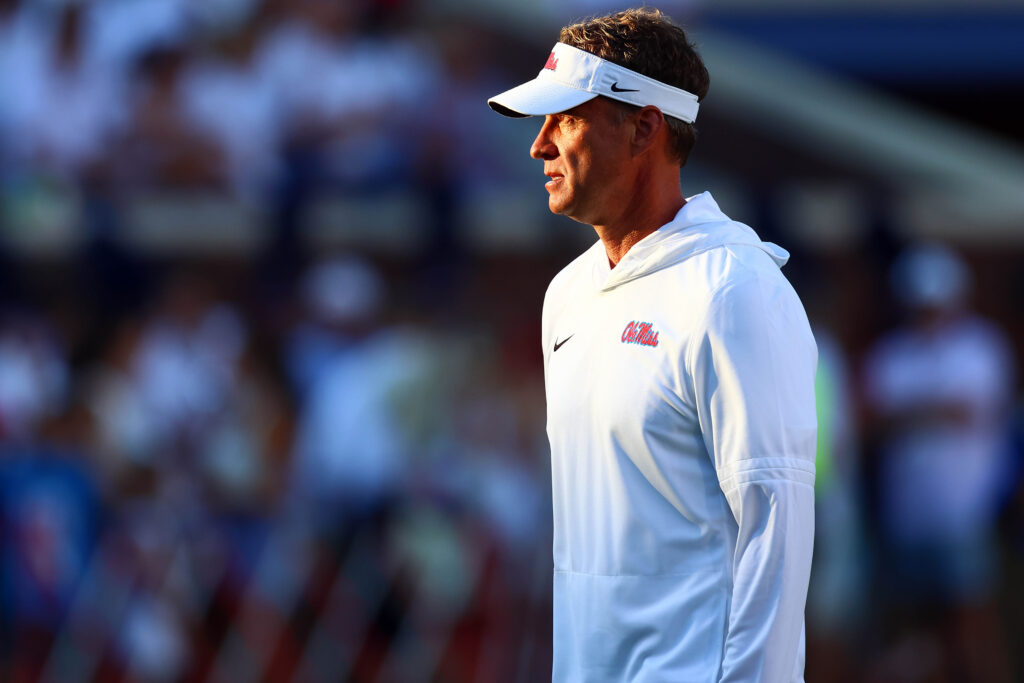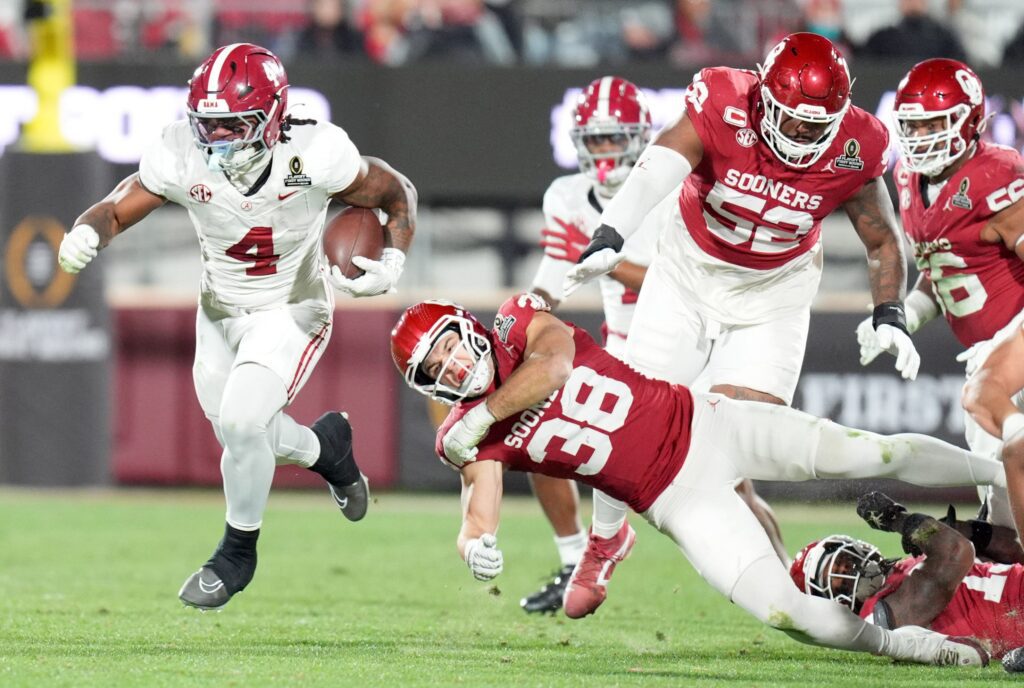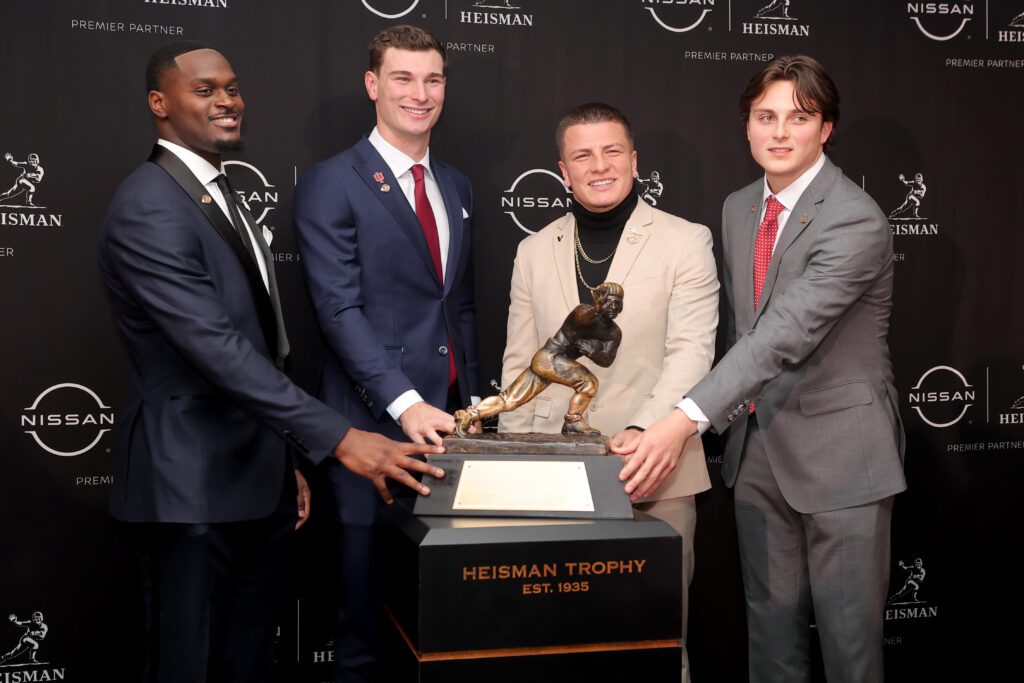Ole Miss head coach Lane Kiffin made a bold statement: the era of SEC dynasties is over. He pointed out that the dominance once held by Nick Saban’s Alabama teams and Kirby Smart’s Georgia squads is becoming a thing of the past. In Kiffin’s view, recent structural changes, like adding a ninth conference game and shifts in NIL and transfer portal rules, have fundamentally altered the balance of power in the league.
Kiffin argues that those traditional powerhouses built rosters so deep that they could lose contributors and still dominate by double digits year after year. But under the current system, he says, that margin for error is gone. He believes teams can no longer hoard talent without consequence, and competitive depth across the SEC is now far more pronounced.
Lane Kiffin Says the Era of SEC Dynasties Is Over
Adding a Ninth Conference Game
One major change weighing on Kiffin’s mind is the SEC’s move to a nine-game conference schedule beginning in 2026. Instead of eight league matchups, teams will face nine, leaving only three nonconference games. In a stacked conference that already features powerhouses and new heavyweight additions like Oklahoma and Texas, that means fewer soft spots on the schedule and more consistently brutal matchups.
Kiffin sees this as a structural leveling of the playing field. Teams that once padded win totals by scheduling easier nonconference games will have less room to breathe. He even warned that traditionally successful programs used to producing 9–10 win seasons might have to contend with 7–5 records in this new environment and that fans and athletic departments may misinterpret those new norms as underperformance.
NIL and the Transfer Portal: New Rules, New Balance
Beyond scheduling, Kiffin points to NIL (Name, Image, Likeness) and updated transfer portal dynamics as factors that have eroded the talent monopolies SEC powerhouses once held. In his view, teams can no longer simply stockpile elite athletes and bury them on the bench, promising NFL exposure down the line. If a player isn’t seeing the field, he has much more freedom, and incentive, to look elsewhere for playing time and compensation.
Kiffin contends that lower-tier SEC programs are now able to make aggressive roster moves. With more flexibility in the portal era, they can cherry-pick backup-level or underused talent from bigger programs and give those players a chance to shine. That dynamic, he believes, accelerates roster turnover and amplifies parity across the league.
He also emphasized that talent doesn’t stay locked in just because of prestige. If a player feels stuck behind a star and not getting reps, he may see a mid-major or lesser SEC school as a better opportunity — especially when NIL deals and portal access lower the barriers to switching programs.
The Rise of “Any Given Saturday”
Kiffin argues that college football is beginning to mirror the NFL’s ethos: “any given Sunday” is transforming into “any given Saturday.” In other words, the predictability of powerhouses running roughshod over lesser teams may be fading. With scheduling tougher, roster movement freer, and parity growing, upsets are becoming more common and sustained competitive balance is growing across the board.
He believes that the SEC’s depth has never been as daunting — not just at the top, but all the way through the middle. More programs are climbing, more teams are able to threaten elite squads, and fewer games are foregone conclusions.
What This Means for College Football’s Power Structure
If Kiffin is right, we may be witnessing a significant transition in how college football power is distributed. Programs that once relied on sustained roster dominance must now navigate a new landscape of tighter margins, more roster turnover, and increased competitive balance.
The days when a dominant program could simply reload and maintain supremacy year after year might be fading. As Kiffin sees it, the SEC — and by extension, all of Division I football — is entering an era where the traditional giants must compete more carefully and adapt more quickly to maintain their edge.
Main Image: Petre Thomas-Imagn Images



